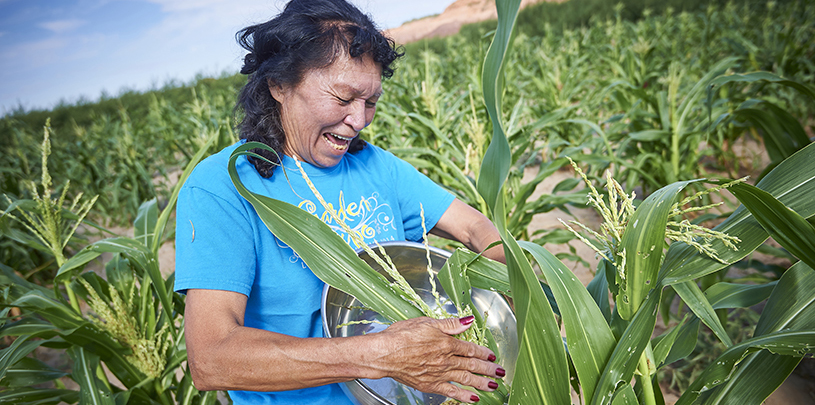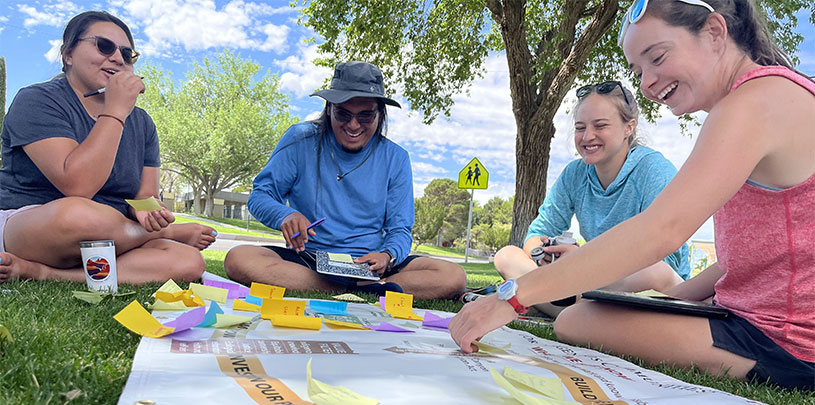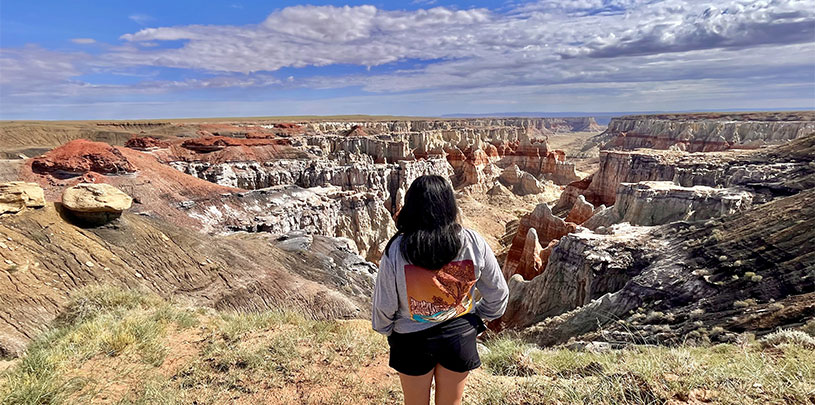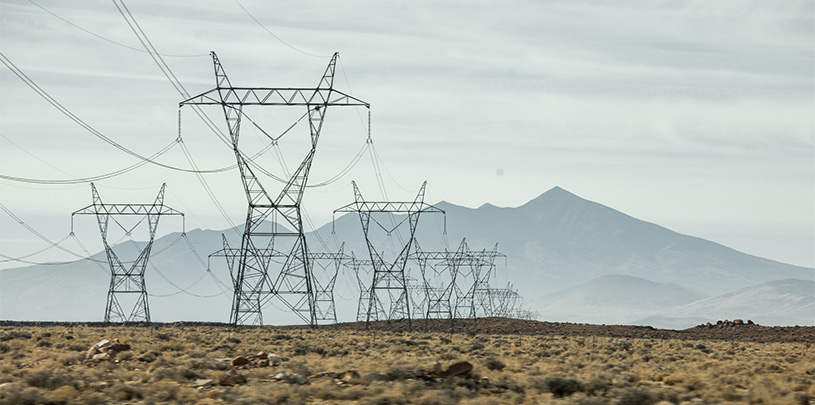 by Amber N. Benally, Rising Leaders Associate
by Amber N. Benally, Rising Leaders Associate
We come from our mothers. And our mother is the earth. That is a teaching that all Navajo people understand. As Navajo farmers add their seeds to the earth, they pray that a new crop will rise to nourish their families and their lives. The hope of Navajo people is also that a new crop of young farmers will rise and continue the ancient teachings.
In the final blog of a three-part series, we talk with Rose Marie Williams, a Navajo elder and lifelong farmer, about her connection to farming, why farming revitalization is needed in Navajo communities, and steps young people can take to get more involved (catch up on part 1 and part 2).
Meet Rose Marie Williams, master farmer

Rose Marie served as an educator for 33 years in Tuba City and Flagstaff. She is a lifelong farmer who focuses her methods on traditional Navajo teachings.
How has farming shaped your identity?
In the boarding school days, you were picked and told which church you would go to, and I was sent to the Church of Latter Day Saints. I also was placed with a foster family. But with my Navajo tradition, that is who I am. I cannot erase that part of me. My whole life is tradition. It is a reverent feeling. We, as Navajos, have used heirloom seeds our whole life. In Navajo, they call it, “Sii hasin. Nizhonigo yá’át’ééh béé iiná.” (Translation: It is wisdom. It is a beautiful and thankful life).
In what way has volunteering with the Tuba City project influenced you and your future as a farmer?
My background has always been in education. I believe it is important to always have a combination of Anglo and Navajo teachings. I incorporate Navajo curriculum with kids because they are always willing to learn. But they also need to know who they are and where they come from. And once you begin teaching, you realize kids love learning. I love what I do!
What can we learn about farming from our elders?
Through your elders, you will learn history. You will learn every spiritual being that is connected to farming. You will understand that your body and everything is half male and half female. As Navajo, we have female and male rains that feed our fields. We have father sky and mother earth. Young people will learn interconnectedness from their elders.
What can we learn about farming from our youth?
K’e (kinship) is a teaching. One way or another, our youth learn about K’e. Children are very knowledgeable. Like my grandson, he believes so much in no GMO’s and everything natural. He learned that with his own curiosity.
Why do you feel it’s important for young Indigenous people to revitalize farming practices?
It serves a purpose in their life. There is so much to learn. But you have to put down the technology and Facebook. When you say, “Hey, I want to learn how to plant,” that is the beginning. Planting has many teachings that we cannot learn through technology. It connects you to your land and to your people.
What would you say to a young person who is interested in farming but doesn’t know where to start?
It has to come from your heart. Through K’e, you embrace it there. Start with the number of seeds that you trust yourself with. Learn your tools and what benefits they have. Learn that each part of farming has a purpose. Even when you have harvested, you can use the weeds to feed your animals. Most importantly, don’t ever put someone down who wants to learn. The food they plant is positive. It feeds them and they are planting for their health and well-being.
Is there anything else you want to say?
Go plant! It’s a tough job, but it is the most rewarding thing.




